Understanding the Function of a ServSafe Food Handler in Ensuring Food Safety Specifications
Understanding the Function of a ServSafe Food Handler in Ensuring Food Safety Specifications
Blog Article
Comprehensive Food Handlers Educating for Health and Safety And Security
In today's rapidly evolving food service landscape, extensive food handlers training has actually arised as a critical component for ensuring hygiene and safety. By instilling vital techniques related to hand health, food storage space, and hygiene, this training not just alleviates the danger of foodborne health problems but also strengthens conformity with regulatory standards. The implications of such training extend beyond mere conformity; they discuss public health and wellness and consumer count on. Yet, the efficiency of these training programs can vary significantly. What aspects really determine their success in fostering a society of safety and security?
Value of Food Safety Training

In addition, food safety training assists to ensure that workers know current guidelines and standards, which are important for preserving functional licenses and avoiding costly charges. Normal training sessions also function as a platform for enhancing ideal practices, thus minimizing the chance of human error, which typically works as a leading root cause of food contamination.
Moreover, purchasing food safety training can improve a facility's online reputation, as consumers increasingly prioritize dining experiences that reflect high security requirements. Such positive actions not just shield consumers but also add to the lasting success of food services. In recap, detailed food security training is an important element of food service operations, straight impacting both public wellness and business sustainability.
Secret Principles of Health
Preserving high standards of health is essential in any type of food taking care of environment to avoid contamination and ensure the safety of consumers. The essential principles of health incorporate a number of important methods that food handlers must continually use.
First, hand hygiene is paramount; food trainers must wash their hands thoroughly with soap and water prior to and after managing food, in addition to after using the toilet or touching any type of potentially infected surfaces. Secondly, tools and surfaces must be regularly cleansed and sterilized to remove microorganisms. This consists of utensils, reducing boards, and countertops, which need to be preserved in a tidy condition.


Proper food storage space is likewise vital; raw foods need to be kept independently from cooked or ready-to-eat items to prevent cross-contamination. servsafe certifications. In addition, preserving appropriate temperature level controls is essential; subject to spoiling items need to be kept at secure temperatures to hinder bacterial development
Finally, individual hygiene can not be forgotten. Food handlers need to wear tidy clothing, use hair restrictions, and avoid functioning when ill. By sticking to these essential concepts of hygiene, food handlers can significantly decrease the threat of foodborne illnesses and advertise a more secure dining experience for all consumers.
Usual Foodborne Diseases
Although lots of foodborne ailments can be avoided with correct hygiene and safe food dealing with practices, they remain a considerable public health concern. Foodborne pathogens can lead to a selection of health problems, ranging from mild intestinal distress to severe issues and also fatality.
Usual foodborne illnesses include salmonellosis, triggered by Salmonella germs, usually connected to undercooked poultry and eggs. Another prevalent disease is listeriosis, connected with unpasteurized dairy products and ready-to-eat meats, which can be especially harmful for expecting ladies and immunocompromised individuals. Norovirus, often acquired from polluted food or surfaces, is known for its rapid spread and ability to create episodes in public setups.
Escherichia coli (E. coli) infection, significantly connected with undercooked ground beef and contaminated produce, can lead to extreme stomach pains and kidney failing in some instances. In addition, Clostridium perfringens, usually located in huge amounts of food that are incorrectly kept, can trigger gastrointestinal disorder with signs appearing shortly after consumption.
Understanding these illnesses is essential for food handlers, as awareness can considerably reduce the risk of contamination and shield public wellness. Appropriate education and learning and training are crucial elements in combating foodborne diseases.
Ideal Practices for Food Handling
Efficient food handling techniques are important in avoiding the spread of foodborne illnesses. Correct hand hygiene is crucial; food handlers have to wash their hands extensively with soap and water before and after taking care of food, particularly raw meat or fowl. This easy activity significantly minimizes the risk of cross-contamination
Second of all, maintaining proper food storage space temperatures is critical. Disposable products should be kept at or listed below 40 ° F(4 ° C) to inhibit microbial development. Additionally, prepared foods should be maintained over 140 ° F(60 ° C) until served.
Finally, ensuring tidiness of surface areas and tools is necessary. Routinely sterilize kitchen counters, cutting boards, and utensils, especially after preparing raw foods. Use different cutting boards for raw and ready-to-eat foods to additionally decrease contamination risks.
Moreover, when preparing food, it is necessary to comply with the concept of "very first in, first out" (FIFO) to handle stock efficiently and decrease putridity. Finally, always read and stick to food labels for safe cooking temperatures and handling guidelines. By applying these finest methods, food handlers can significantly boost food safety and security and secure public health and wellness.
Implementing a Safety And Security Society
Producing a security culture within a food taking care of setting is vital for fostering a dedication to food security among all employee. This culture stresses the value of food safety as a common obligation, urging workers to prioritize health practices regularly.
To carry out a safety society, organizations need to begin by giving detailed training that resolves servsafe food handling protocols, possible hazards, and the value of personal health. Educating sessions ought to be interactive and customized to the particular duties of staff participants, ensuring significance and engagement.
Furthermore, management plays a vital duty in establishing this society. Monitoring ought to design secure practices and interact the relevance of food safety on a regular basis. Recognizing and rewarding workers that copyright safety requirements can better reinforce these behaviors.
Furthermore, open interaction networks have to be established, allowing personnel to report security problems without anxiety of repercussion. Regular security audits and comments sessions can assist recognize locations for renovation and enhance accountability.
Ultimately, cultivating a safety culture not only enhances compliance with food safety regulations but likewise safeguards public health, fosters worker morale, and adds to the overall success of the food handling establishment.
Conclusion
In conclusion, comprehensive food trainers training plays a crucial duty in advertising health and security within food service establishments. By equipping staff members with essential expertise concerning food security principles, common foodborne ailments, and ideal methods for dealing with food, such training considerably decreases health threats. Moreover, promoting a society of safety and security improves the establishment's online reputation and lines up with consumer assumptions for high security standards, inevitably contributing to public health defense and the general success of the food service sector.
In today's rapidly progressing food service landscape, detailed food handlers training has actually arised as an important component for making certain hygiene and safety and security.Food security training is critical for preserving high criteria in food handling and preparation, with research studies showing that proper training can minimize foodborne illnesses by up to 30%. In summary, comprehensive food security training is an essential aspect of food solution operations, directly influencing both public health and service sustainability.

Report this page